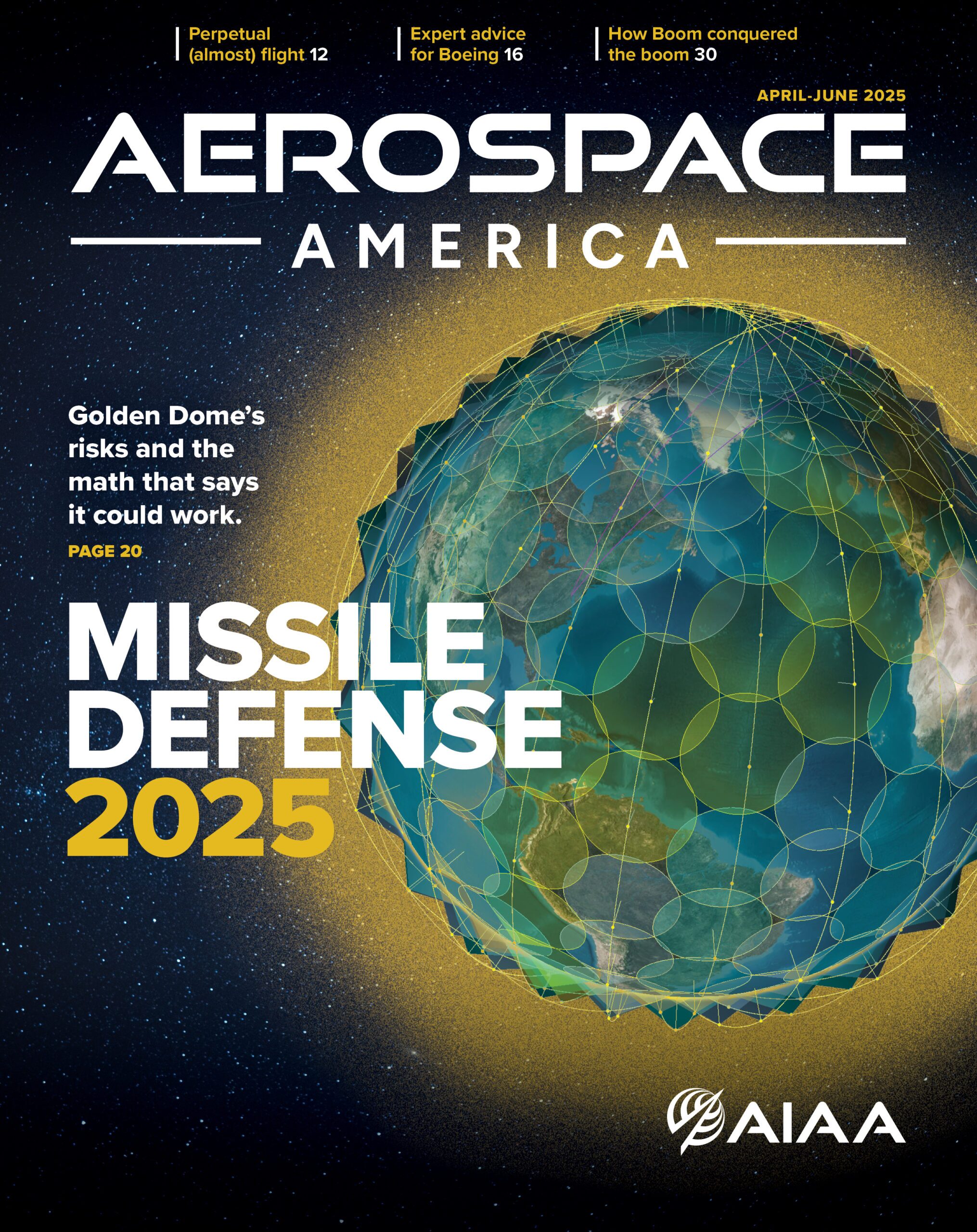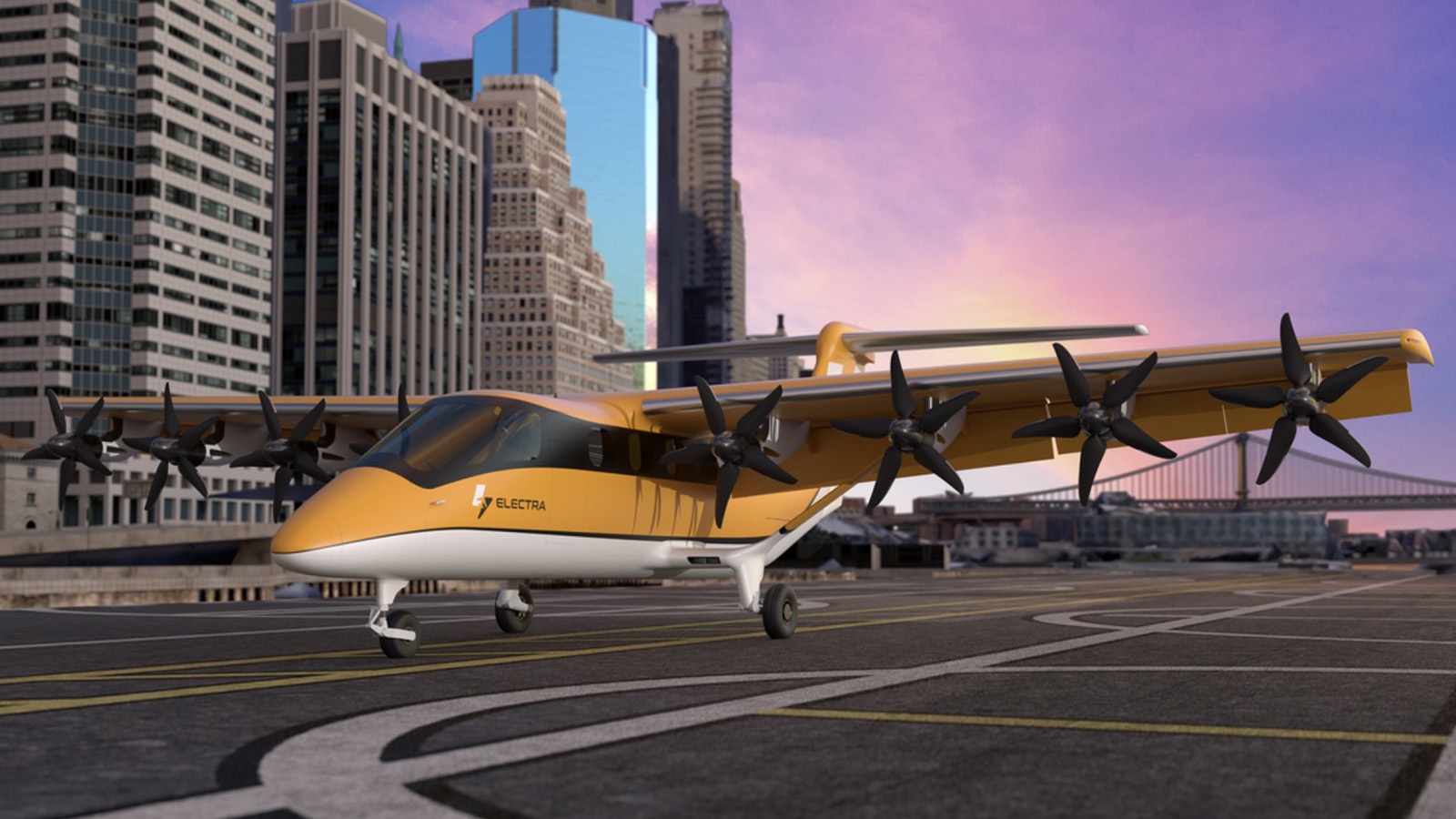Stay Up to Date
Submit your email address to receive the latest industry and Aerospace America news.
In advanced air mobility, all-electric designs still have a place, but burning fuel is increasingly accepted
Among the dozens of companies developing electrified aircraft, a decision to embrace hybrid technology in addition to fully battery-powered versions was once seen as a step that could undermine investment in the purely electric designs. Those who were pursuing both technologies tended to be quiet, if not secretive, about their work on versions that burn fuel to supplement battery power.
That is no longer the case.
Overall, says Austin Moeller, an analyst and director of equity research at Vancouver-based financial services company Canaccord Genuity, while some companies are staying with purely electric designs for trips of 240 kilometers or less, others have publicly embraced hybrid technology and expanded their business models to regional transport. Still others have decided to go strictly hybrid.
For more about advanced air mobility, receive the True Mobility newsletter in your inbox.
Driving much of the awakening are the U.S. armed forces. Agility Prime, a program of the U.S. Air Force that funds and tests electric vertical-lift aircraft, has expressed interest in the aircraft for commanders who need to shuttle troops and cargo around their sprawling ranges, particularly in the Asia-Pacific region. In the civilian world, regional trips between cities — beyond the range of most battery-only aircraft — remain a potential market.
Extending the expected range of electrified aircraft that already exist in experimental and research forms means adding fossil fuel generators to either charge the batteries in flight or send power directly to motors when needed. The trend also offers benefits of reduced emissions and savings on fuel costs, advocates point out.
It’s not clear yet what if any changes the Trump administration will bring to the trend. In a 2023 speech, then-candidate Donald Trump mentioned electric aircraft, saying, “I want to ensure that America, not China, leads the revolution in air mobility.” However, in July, during a rally he cast doubt on electrification, although in the context of solar-powered aircraft: “They want electric planes. What happens if the sun isn’t shining while you’re up in the air?”
Here are some examples of the trend toward hybrid-electric:
Archer’s hybrid
Founded in 2018, Archer Aviation in California had until recently only publicly discussed its electric-only air taxi development. But in December, it announced the formation of Archer Defense, a corporate division that will develop a hybrid-electric version of its Midnight vertical-takeoff-and-landing aircraft for military use.
While Archer has provided few details, Moeller, the analyst, says Archer’s pursuit of a hybrid VTOL is purely tied to the military variant of the Midnight that it is developing.
Archer engineers are developing the aircraft under an agreement with Anduril Industries, which develops defense software and hardware designed or enhanced by artificial intelligence.
Archer said in a press release that it “will target a potential program” of the U.S Department of Defense but declined to specify the program or address whether it had worked on a hybrid-electric design before announcement of the Archer Defense division. As for the agreement with Anduril, Archer told me the “specific details of the program are confidential.”
The potential for the military to embrace a hybrid-electric vehicle has precedent. In 2023, the Army announced a plan to develop a hybrid-electric Abrams tank, the M-1E3, saying the hybrid propulsion would reduce the “logistical footprint” — fuel, maintenance and manpower requirements.
BETA Technologies
BETA, based in Vermont, has been outspoken about the all-electric aircraft it is developing, and, until recently, had shared little information about its development of a hybrid-electric engine for use as a range extender. That work is being done under a contract with the U.S. Army DEVCOM, short for the Combat Capabilities Development Command.
At AIAA’s SciTech Forum in January, CEO Kyle Clark described the use case for the hybrid-electric engine: “You drop it into the cargo hold of the aircraft,” Clark said, adding that the aircraft then has about 3,200 miles [5,150 km] of range.
BETA told me by email that it conducted its first hybrid flight in 2023 and has since conducted hundreds of hours of tests with the hybrid system. While the company has no timeline to commercialize this engine, it said the technology “has wide-ranging applications across both the defense and commercial markets.”
Electra
This 70-person Virginia company isn’t a newcomer to the hybrid trend. It has staked its business model on regional passenger transport and potential military contracts for its hybrid propulsion.
Electra aims for a range of 2,000 km, too far for existing battery technology.
In November, Electra unveiled the design of its EL9 Ultra Short, a nine-passenger hybrid-electric aircraft that the company promises will be a “gateway” to a world of “cleaner” and more affordable regional air travel. So far, the company has flown a two-seat prototype.
NASA-funded research
NASA has been researching hybrid-electric propulsion under its Electrified Powertrain Flight Demonstration Project with Cincinnati-based GE Aerospace and magniX of Everett, Washington.
In 2022, NASA and GE tested the company’s 1-megawatt propulsion system in pressure and temperature conditions simulating 45,000 feet in altitude. The company announced in May 2023 plans to spend up to $20 million building an electric test center in Ohio to meet “increased demand” for hybrid-electric aircraft engine development.
NASA says that this year it will test a hybrid-electric engine made by magniX at the agency’s Electric Aircraft Testbed in Ohio. NASA says the goal is to “improve fuel efficiency and reduce harmful emissions from flight.”
VerdeGo Aero
In a hangar adjacent to Embry-Riddle Aeronautical University in Daytona Beach, Florida, engineers and technicians at VerdeGo Aero are refining the design of a hybrid-electric powerplant, the VH-4T, the goal being to generate 400 kilowatts continuously.
“There is a shift toward hybrid in advanced air mobility,” Richard “Pat” Anderson, an aerospace professor at Embry-Riddle and a co-founder and the chief technology officer of VerdeGo, tells me. “People are thinking the first use case may not be rooftops in New York but rather the military, which is actually the way things have gone historically in aviation for emerging technology.”
The company plans to have a production version of the VH-4T by December.
“Many companies that have claimed to be focused only on battery-electric also have a hybrid option they’re working on without publicizing it,” Anderson says.
About paul brinkmann
Paul covers advanced air mobility, space launches and more for our website and the quarterly magazine. Paul joined us in 2022 and is based near Kennedy Space Center in Florida. He previously covered aerospace for United Press International and the Orlando Sentinel.
Related Posts
Stay Up to Date
Submit your email address to receive the latest industry and Aerospace America news.




